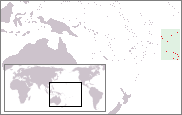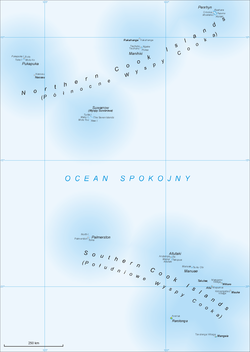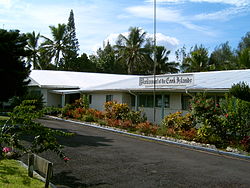Cook Islands | |||||||||||||||||||||||||||||||||||||||||||||||||||||||||||||||||||||||||||||||||||||||||||||||||||||||||||||||||||||||||||||||||||||||||||||||||||||||||||||||||||||||||||
| Cook Islands - Find Mobile Phones, Internet. Country Code | |||||||||||||||||||||||||||||||||||||||||||||||||||||||||||||||||||||||||||||||||||||||||||||||||||||||||||||||||||||||||||||||||||||||||||||||||||||||||||||||||||||||||||
| Internet Domain name TLD - .ck | |||||||||||||||||||||||||||||||||||||||||||||||||||||||||||||||||||||||||||||||||||||||||||||||||||||||||||||||||||||||||||||||||||||||||||||||||||||||||||||||||||||||||||
| Calling code - 682 | |||||||||||||||||||||||||||||||||||||||||||||||||||||||||||||||||||||||||||||||||||||||||||||||||||||||||||||||||||||||||||||||||||||||||||||||||||||||||||||||||||||||||||
| Cook Islands / Kūki 'Āirani | |||||||||||||||||||||||||||||||||||||||||||||||||||||||||||||||||||||||||||||||||||||||||||||||||||||||||||||||||||||||||||||||||||||||||||||||||||||||||||||||||||||||||||
 |

| ||||||||||||||||||||||||||||||||||||||||||||||||||||||||||||||||||||||||||||||||||||||||||||||||||||||||||||||||||||||||||||||||||||||||||||||||||||||||||||||||||||||||||
| Flag - Coat of arms | |||||||||||||||||||||||||||||||||||||||||||||||||||||||||||||||||||||||||||||||||||||||||||||||||||||||||||||||||||||||||||||||||||||||||||||||||||||||||||||||||||||||||||
| Anthem : Te Atua Mou E God is Truth | |||||||||||||||||||||||||||||||||||||||||||||||||||||||||||||||||||||||||||||||||||||||||||||||||||||||||||||||||||||||||||||||||||||||||||||||||||||||||||||||||||||||||||

Capital | (and largest city) - Avarua Latitude: 21°12′S Longitude:159°46′W / 21.2°S 159.767°W / -21.2; -159.767
| Official language(s)
- English | Cook Islands Māori Ethnic groups - 87.7% Māori, 5.8% part Māori, 6.5% other
| Demonym - Cook Islander
| Government
- Constitutional monarchy
| Head of State
- Queen Elizabeth II
| Queen's Representative - | Sir Frederick Tutu Goodwin Prime Minister
- Jim Marurai
| Associated state
| Self-government in free association with New Zealand - 4 August 1965
| Area
| Total - 240 km
(206th) | 91 sq mi Population
| 2006 census - 19,569
| Density - 76/km (124th) | 197/sq mi GDP
(PPP) - 2005 estimate
| Total - $183.2 million ( not ranked
| Per capita - $9,100 ( not ranked
| Currency
- New Zealand dollar | (Cook Islands dollar also used) ( NZD
Time zone - (UTC -10
| Drives on the - left
| The Cook Islands |
The main population centres are on the island of Rarotonga (14,153 as of 2006), where there is an international airport. There is also a much larger population of Cook Islanders in New Zealand, particularly the North Island. In the 2006 census, 58,008 self-identified as being of ethnic Cook Island Māori descent. -
With over 90,000 visitors travelling to the islands in 2006, tourism is the country's number one industry, and the leading element of the economy, far ahead of offshore banking, pearls, marine and fruit exports.
Defence is the responsibility of New Zealand, in consultation with the Cook Islands and at its request. In recent times, the Cook Islands have adopted an increasingly independent foreign policy. Cook Islanders are nationals of New Zealand: there is no "Cook Islands citizenship". 1 - Geography
| 2 - History
| 3 - Politics
| 4 - Administrative subdivisions
| 5 - Economy
| 6 - Culture
| 7 - Art
| 8 - Biology
| 9 - Sport
| 10 - See also
| 11 - References
| 12 -
| | Geography Geography of the Cook Islands
| 
| Map of the Cook Islands.
| The Cook Islands are in the South Pacific Ocean, north-east of New Zealand, between French Polynesia and American Samoa. There are fifteen major islands, spread over 2.2 million square kilometres of ocean, divided into two distinct groups: the Southern Cook Islands, and the Northern Cook Islands of coral atolls. - |
The islands were formed by volcanic activity; the northern group is older and consists of six atolls (sunken volcanoes topped by coral growth). The climate is moderate to tropical.
The 15 islands and two reefs are grouped as follows: Southern Cook Islands:
| Nga-pu-Toru ("Three Roots", the group name for the easternmost islands of Southern Group
| Atiu (Enua Manu or Island of Birds
| Ma'uke (Akatokamanava
| Mitiaro (Nukuroa
| Remaining islands of the South:
| Aitutaki (Araura Enua
| Mangaia (Auau Enua
| Rarotonga (Tumutevarovaro) and also with the capital, Avarua.
| Palmerston Island (Pamati) sometimes grouped with the Northern Group.
| Manuae
| Takutea
| Winslow Reef (submerged
| Northern Cook Islands:
| Manihiki (Te Fuinga o Niva
| Nassau (Te Nuku o Ngalewu
| Penrhyn Island (Tongareva or Mangarongaro
| Pukapuka (Te Ulu o te Watu
| Rakahanga (Tapuahua
| Suwarrow also called Suvorov
| Tema Reef (submerged
|
History
| History of the Cook Islands
| 
| Beach on Rarotonga.
| The Cook Islands were first settled in the 6th century CE by Polynesian people who migrated from nearby Tahiti, to the southeast. 5 - |
Spanish ships visited the islands in the sixteenth century; the first written record of contact with the Islands came with the sighting of Pukapuka by Spanish sailor Álvaro de Mendaña in 1595 who called it San Bernardo (Saint Bernard). Portuguese-Spaniard Pedro Fernández de Quirós, made the first recorded European landing in the islands when he set foot on Rakahanga in 1606, calling it Gente Hermosa (Beautiful People). 6 -
British navigator Captain James Cook arrived in 1773 and 1777 7 - and named the islands the Hervey Islands ; the name "Cook Islands", in honour of Cook, appeared on a Russian naval chart published in the 1820s. 8 -
In 1813, John Williams, a missionary on the Endeavour (not the same ship as that of Cook), made the first official sighting of the island of Rarotonga. 9 - The first recorded landing on Rarotonga by Europeans was in 1814 by the Cumberland; trouble broke out between the sailors and the Islanders and many were killed on both sides. 10 - The islands saw no more Europeans until missionaries arrived from England in 1821. Christianity quickly took hold in the culture and many islanders continue to be Christian believers today.
The Cook Islands became a British
protectorate at their own request in 1888, mainly to thwart French expansionism. They were transferred to New Zealand in 1901. They remained a New Zealand protectorate until 1965, at which point they became a self-governing territory in free association with New Zealand. In that year, Albert Henry of the Cook Islands Party was elected as the first Prime Minister. Sir Albert Henry led the country until he was accused of vote-rigging. He was succeeded in 1978 by Tom Davis of the Democratic Party.
Today, the Cook Islands are essentially independent ("self-governing in free association with New Zealand") but New Zealand is tasked with overseeing the country's defence.
On 11 June 1980, the United States signed a treaty with the Cook Islands specifying the maritime border between the Cook Islands and American Samoa and also relinquishing its claim to the islands of Penrhyn,
Pukapuka,
Manihiki, and Rakahanga. 11 - In 1990 the Cook Islands signed a treaty with France which delimited the boundary between the Cook Islands and French Polynesia. 12 -
New Zealand retains some responsibility for external affairs, in consultation with the Cook Islands. As of 2005, it has diplomatic relations in its own name with eighteen other countries. Executive power is exercised by the government. Legislative power is vested in both the government and the Parliament of the Cook Islands.
The Cook Islands is not a United Nations full member but participates in WHO and UNESCO, and is an associate member of the Economic and Social Commission for Asia and the Pacific (UNESCAP).
The Judiciary is independent of the executive and the legislature.
Weaving - The outer islands produce traditional weaving of mats, basketware and hats. Particularly fine examples of rito hats are worn by women to church on Sundays. They are made from the uncurled immature fibre of the coconut palm and are of very high quality. The Polynesian equivalent of Panama hats, they are highly valued and are keenly sought by Polynesian visitors from Tahiti. Often, they are decorated with hatbands made of minuscule pupu shells which are painted and stitched on by hand. Although pupu are found on other islands the collection and use of them in decorative work has become a speciality of Mangaia. The weaving of rito is a speciality of the northern island of Penrhyn.
Tivaevae - A major art form in the Cook Islands is tivaevae. This is, in essence, the art of making of tropical Island scenery handmade patchwork quilts. Introduced by the wives of missionaries in the 19th century, the craft grew into a communal activity and is probably one of the main reasons for its popularity. The Cook Islands make some of the most beautiful displays of tivaevae the eye can see.
Contemporary Art - The Cook Islands has produced notable and internationally recognised contemporary artists and the main island of Rarotonga has an exceptionally vibrant contemporary arts scene. Artists include painter (and photographer) Mahiriki Tangaroa, sculptors Eruera (Ted) Nia (originally a film maker) and master carver Mike Tavioni, painter (and Polynesian tattoo enthusiast) Upoko’ina Ian George, Aitutakian-born painter Tim Manavaroa Buchanan, Loretta Reynolds, Judith Kunzlé, Joan Rolls Gragg, Kay George (who is also known for her exquisite fabric designs), Apii Rongo, and multi-media, installation and community-project artist Ani O'Neil, all of whom currently live on the main island of Rarotonga. Atiuan-based Andrea Eimke is an artist who works in the medium of tapa and other textiles, and also co-authored the book 'Tivaivai - The Social Fabric of the Cook Islands' with British academic Susanne Kuechler. Many of these artists have studied at university art schools in New Zealand and continue to enjoy close links with the New Zealand art scene.
|





















